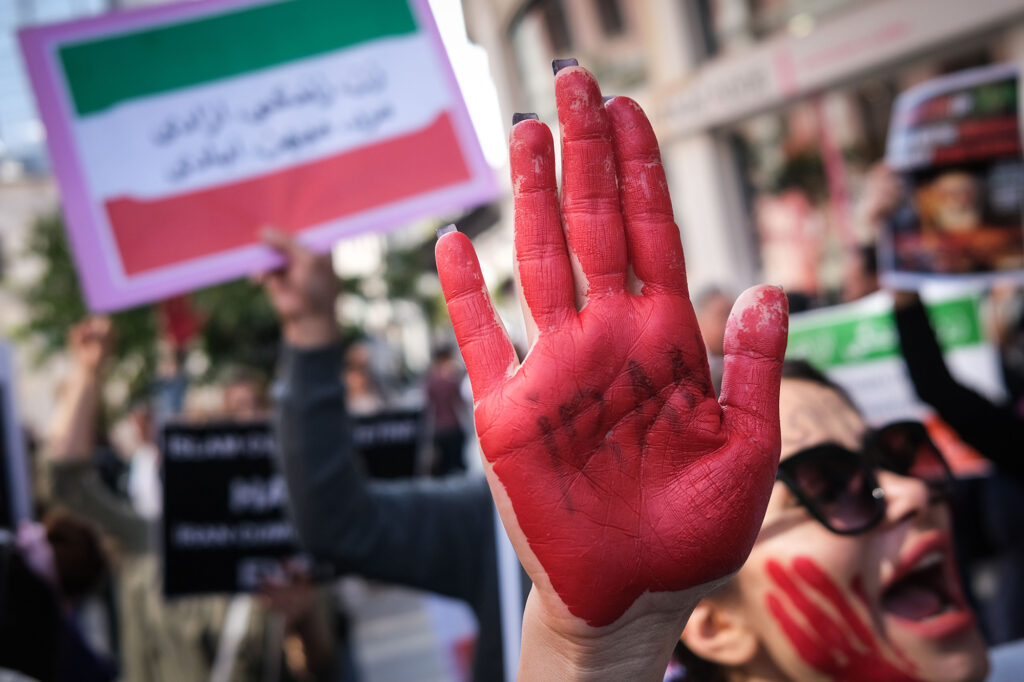🔴 Website 👉 https://u-s-news.com/
Telegram 👉 https://t.me/usnewscom_channel
“To the whole world I have a message from Iran . . . This war is not our choice. We are not supporting it. But we feel that Israel is supporting us, caring about us . . . We are hostages here.” The face of the Iranian woman in the viral video from late June is masked under a black headwrap; only her eyes remain uncovered. Her voice is resolute, her words sharp and her English flawless. “Help us because we cannot stand against them with bare hands . . . We are scared not from Israel and the United States but from our own regime.”
The unknown woman is one of the many thousands who have declared their solidarity with the United States and Israel for trying to end Iran’s nuclear weapons program. To the surprise of many Iran watchers a “rallying around the flag” did not happen during the nation’s war with Israel. “We haven’t done it and we will not do it,” remarked another anonymous face in a different video, “because this is not our flag.”
The disconnect between the aspirations of the Iranian government and the hopes of the Iranian people is aptly phrased by Karim Sadjadpour, senior fellow at Carnegie Endowment for Peace. “The Iranian people want to be South Korea, while the regime wants to be North Korea. This is an untenable situation.”
By all accounts, the “North Korea” of the Middle East is in far deeper trouble than it is willing to admit. Domestically, internal opposition is steadily growing with a mere 22% of Iranians surveyed preferring an Islamic Republic over other political systems. The same survey concludes that 86% of Iranians blame Iran’s dire economy on “domestic inefficiency and corruption.”
Looking to deepen the divide between the regime and its people, Prime Minister Benjamin Netanyahu has repeatedly reached out to Iranians’ hearts and minds stating that he is not at war with the “great” and “brave” Iranian people, but with the Iranian regime. “We are clearing the path for you to achieve your objective, which is freedom,” he said as the war began.
His broadcasts in Farsi subtitles during prime evening hours across Iran have succeeded by at least one happy measure: an old but hugely popular song, “Bibi-Gol” (“A flower called Bibi”), was recently dedicated to the Israeli prime minister (whose nickname is “Bibi”) in appreciation for his support of Iranians’ call for freedom.
Persian creativity aside, many of the Iranians I have spoken with are realistic, gripped with both hope and fear. Arvin, a 21-year old college student who wished to stay anonymous, feels the “otherness” of being an Iranian and welcoming attacks on his homeland. But he blames the mullahs. “My generation is suspended between two worlds: one that wants us to be free and prosperous. And another that rules over us with chain and lashes. We want to be part of the first world but are stuck in the second.”
Despite the regime’s weakened state and both Trump and Netanyahu’s prodding to Iranians to rise up, for now Iranians have mostly opted to hunker down. Their fear is real. According to ISNA News and the New York-based Center for Human Rights in Iran, a “season of traitor killing” has begun: a crackdown on Iran’s Bahai, Kurd, Baluch and Jewish citizens that has resulted in hundreds of arrests and scores of death sentences.
Historically, when given a choice between reform and repression, Tehran has opted for strangulation, exacting revenge and enacting draconian measures to retain its grip on power. Azar, a 22-year-old nursing student who joined the jubilant Iranian protestors on the first night of the bombings, has been in hiding ever since. “They have cameras that identify people,” she told me over a hushed phone call. “I shouldn’t be on this call with you.”
How are Iranians coping? Hundreds of thousands leave the country annually — some 180,000 in 2019 alone — for North America and Europe where their advanced degrees and professional skill sets have been in high demand. Exact figures are hard to verify, but according to a 2014 study, this worsening “brain drain” accounts for an annual loss of $150 billion to the Islamic Republic’s economy.
The regime has no plans to reverse the tide, long branding those who leave as traitors. “They say the brains escaped. Let them escape . . . they are treacherous brains,” railed the leader of the Islamic Revolution, Ayatollah Khomeini, in 1985.
Those who remain hang on to the faint hope that the regime will collapse under the weight of its own brutality. While the clerics are in the throes of reconstituting their power in the aftermath of the Israeli and American bombings, Crown Prince Reza Pahlavi has stepped up his activities to unite Iranians. Earlier this week he announced plans for a summit “of national cooperation” to lead the country in a “democratic transition.”
For many others, the 12-day war and Israel’s attacks on symbolic regime institutions — such as the Basij militia headquarters, the notorious Evin prison and the state television station (IRIB) — represent a new kind of hope, one that is backed by the hard power of Washington and Tel Aviv.
“This regime should end,” pleads the masked woman in perfect English. “If you leave this regime with these wounds they will hurt all of us — here, in Europe and in America. Please help us.”
Nazee Moinian is an adjunct fellow at the Middle East Institute.
